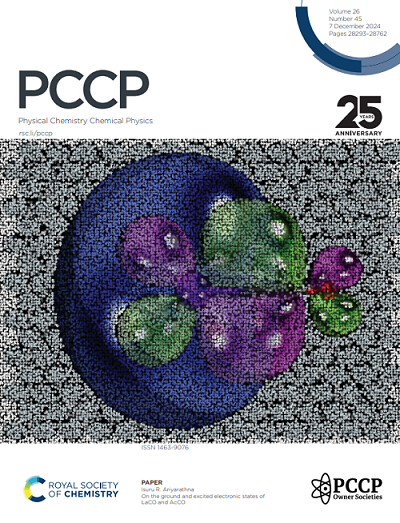Assessing residual stress generation and entrapment in glass-to-metal seals: Role of glass solidification during the cooling process
IF 2.9
3区 化学
Q3 CHEMISTRY, PHYSICAL
引用次数: 0
Abstract
Glass-to-metal (GTM) seals present significant challenges due to residual stress (RS) in engineering applications. While previous studies have focused primarily on analyzing the final RS distribution, this work uniquely explores the formation and entrapment of stress during the cooling process, which has been largely overlooked. By investigating cooling-induced changes in glass properties, it reveals the pivotal role of glass solidification and the intricate interplay between thermal dynamics and mechanical properties in shaping stress distribution within GTM seals. Using a combination of photoluminescence spectroscopy and layer-by-layer polish grinding methods, five distinct solidification zones were identified and investigated: primary, secondary, bottom interference, top interference, and final. These zones exhibit different stress profiles because of the disparities in solidification rates and glass transitions, which are affected by the thermal properties of the contacting materials and their heat transfer dynamics. A notable observation from the analysis of the stress distribution along z-axis is the near absence of stress at the bottom layer, which is accompanied by minor tensile stress at the glass-metal interface. In contrast, the middle layers display a non-uniform stress distribution within the xy-plane, with stress levels intensifying proximate to the glass-metal interfaces, indicating complex stress states within these regions. The uppermost layer exhibits a complex stress profile characterized by compressive and tensile strains that attain stable equilibrium without experiencing localized peaks near the glass-metal interfaces. This research comprehensively analyzes RS formation and entrapment in GTM seals, highlighting the importance of precise thermal management during cooling to achieve desired high-performance seals.求助全文
约1分钟内获得全文
求助全文
来源期刊

Physical Chemistry Chemical Physics
化学-物理:原子、分子和化学物理
CiteScore
5.50
自引率
9.10%
发文量
2675
审稿时长
2.0 months
期刊介绍:
Physical Chemistry Chemical Physics (PCCP) is an international journal co-owned by 19 physical chemistry and physics societies from around the world. This journal publishes original, cutting-edge research in physical chemistry, chemical physics and biophysical chemistry. To be suitable for publication in PCCP, articles must include significant innovation and/or insight into physical chemistry; this is the most important criterion that reviewers and Editors will judge against when evaluating submissions.
The journal has a broad scope and welcomes contributions spanning experiment, theory, computation and data science. Topical coverage includes spectroscopy, dynamics, kinetics, statistical mechanics, thermodynamics, electrochemistry, catalysis, surface science, quantum mechanics, quantum computing and machine learning. Interdisciplinary research areas such as polymers and soft matter, materials, nanoscience, energy, surfaces/interfaces, and biophysical chemistry are welcomed if they demonstrate significant innovation and/or insight into physical chemistry. Joined experimental/theoretical studies are particularly appreciated when complementary and based on up-to-date approaches.
 求助内容:
求助内容: 应助结果提醒方式:
应助结果提醒方式:


